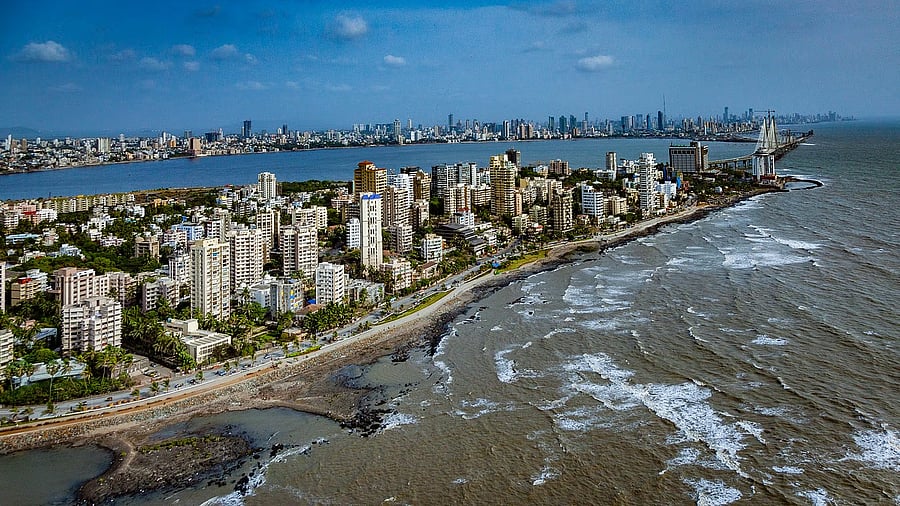
Aerial view of Mumbai Coastline from a helicopter.
Credit: iStock Photo
Mumbai: With new research findings from New Zealand sounding alarm bells that the rising sea levels could simultaneously drive groundwater levels to rise, green groups have asked the disaster management authorities to brace themselves for floods from beneath the inlands.
Quoting a new paper focused on the coastal city of Dunedin, New Zealand, NatConnect Foundation has appealed to Prime Minister Narendra Modi to take note of the research that sea level rise might change groundwater levels and thereby increase inland flooding hazards.
The findings have just been carried by a science magazine published by AGU, a global community supporting more than half a million advocates and professionals in the Earth and space sciences.
South Dunedin already experiences periodic flooding that will become even more challenging with sea level rise; the researchers describe the city as a poster child for New Zealand communities responding and adapting to climate change and rising seas, the report says.
“These findings only reinforce our longstanding demand to conserve our wetlands which act as urban sponges and save the river flood plains,” NatConnect Foundation director B N Kumar called for maintaining spaces for waters to expand instead of burying the water bodies under the pretext of infrastructure development.
It is high time that the government braces itself for disaster prevention rather than inviting disasters with its anti-environment policies and taking the ecological disasters lightly, Kumar said.
Simultaneously, he said the Union Ministry of Environment, Forest and Climate Change (MOEFCC) along with the geological survey of India must examine the coastal groundwater tables while studying the rising sea levels.
Except for a brief report by the government on the coastal areas erosion, there has not been any serious discussion on the threats from the rising sea levels though the country has over 7,500 km coastline, NatConnect regretted.
“We are dangerously playing with the coastal zone management plans (CZMP) to suit the real estate and infrastructure plans thus compromising with the safety of the lives and properties,” said Nandakumar Pawar, director of NGO Sagar Shakti.
Governments are forced to spend crores of rupees from the taxpayers’ money for flood relief in areas such as Uran and Panvel talukas where burial of intertidal wetlands for real estate and other projects has forced water to find its own course, Pawar pointed out.
This is bound to get further aggravated in Mumbai Metropolitan Region (MMR) region where wetlands are disappearing fast and project proponents such as CIDCO, JNPA and MMRDA do not care for ecology, he said.
Kumar said there are several learnings from the New Zealand researchers who used 2019–2023 data from a network of 35 groundwater sensors installed across Dunedin’s low-lying coastal land, where much of the city’s infrastructure is located.
This is much akin to the situation in Uran in particular which witnesses floods even during the non-monsoon months, Pawar said.